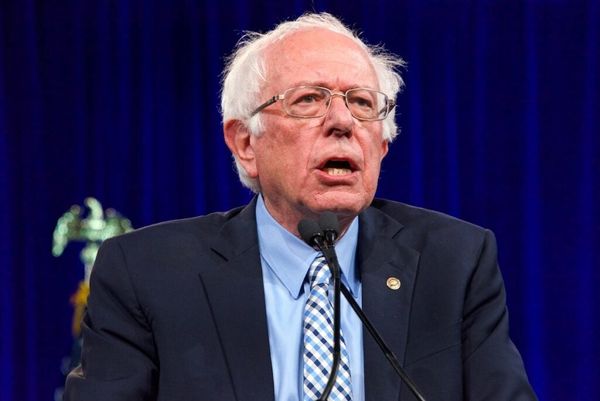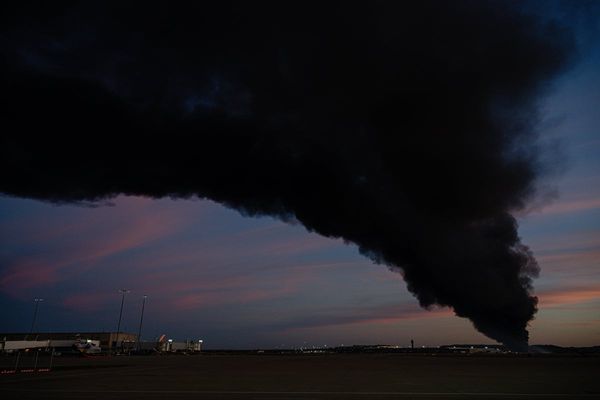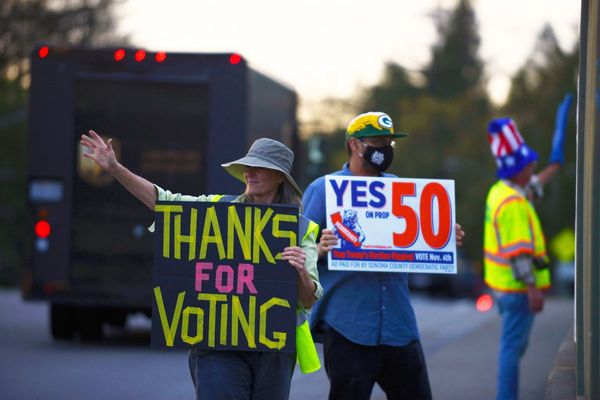
If he couldn’t keep living in the Hibiscus Gardens caravan park, in the shadow of Ballina’s famous Big Prawn, Johnny Tierney would be staying in his car or a tent.
He’s rented a caravan at the park in the New South Wales northern rivers for 17 years. Tierney’s been flooded twice this year, and can’t afford to rent elsewhere if that was no longer an option.
“I would be living in the back of my truck or in a tent in my daughter’s back yard,” he says.
“The reality is there’s no housing … the rents have jumped up.
“I can’t leave because I’ve got three kids and 18 grandkids [nearby] so I can’t ever leave this area.”
Tierney is among thousands who could be affected if the government acts on an independent inquiry’s recommendation to stop flood-prone caravan parks from allowing long term rentals.
It was one of 28 recommendations handed to the government by former chief scientist Mary O’Kane and former police chief Mick Fuller earlier this month.
The inquiry found that caravan parks had, over time, moved from holiday spots to “affordable longer-term and permanent accommodation, especially for retirees on constrained incomes, with some parks having transformed into a form of permanent senior housing”.

The managers of the park Tierney calls home – Michelle Taylor and Brendan Edwards – pride themselves on putting roofs over the heads of people who would struggle elsewhere.
“There people need somewhere to live and caravan parks are the cheapest form of living for them. They don’t have a chance in the ‘real world’,” Taylor says.
“Us caravan park managers try to give people a chance.”
Residents pay between $106 and $128 a week to live in the park – which is less than the going rate for traditional rentals in the booming region, where homelessness was on the rise even before the floods.
The park managers know it’s not perfect having vulnerable people living on flood-prone land, but they can’t see where people would go if the government was to implement the recommendation, which it has accepted in principal.
“If they did close down these parks, a lot of people will be stuffed,” Edwards says.
“Surely there’d be a cut off point – say, no more from now on – but are they going to kick out all those people in really established homes? They’re going to have a spend a lot of money to buy them out or move them.”
The inquiry heard stories of vulnerable people being evacuated from their homes and the dire situations many of the residents were in before recommending a ban on caravan parks below the risk-based flood planning level hosting permanent tenants.

The government says it is “committed to better protecting permanent residents of caravan parks and mobile housing estates from floods”, while noting the recommendation would impact “current residents and vulnerable people”.
The government says it would consider how to “best support them with alternative accommodation options if permanent residency in caravan parks and mobile housing estates is no longer an option”.
Working out how to tackle the complex issue will be a task of the yet to be formed NSW Reconstruction agency announcedin Lismore last week, according to the Department of Planning and Environment.
“The agency will be responsible for considering the recommendations, including relating to buybacks and land swaps, and will work with the department … on the planning aspects,” a department spokesperson says.
Until then, the government will consider handing councils more power to stop caravan parks from morphing into “permanent estates”.
“Councils remain responsible for assessing applications for caravan parks, and planning controls provide guidance for assessing these developments on flood or bushfire prone land,” the spokesperson says.

Figures from the Caravan Camping Industry Association of NSW (CCIA NSW) show more than 36,000 people were living in land lease communities, including caravan parks, last September.
“CCIA NSW works closely with all layers of government and in particular we have been working with the Government on the planning reforms for caravan parks and manufactured home estates for some time,” a CCIA NSW spokesperson says.
“We will advocate for reforms and work with Government to support this important housing choice for the people of NSW.”







